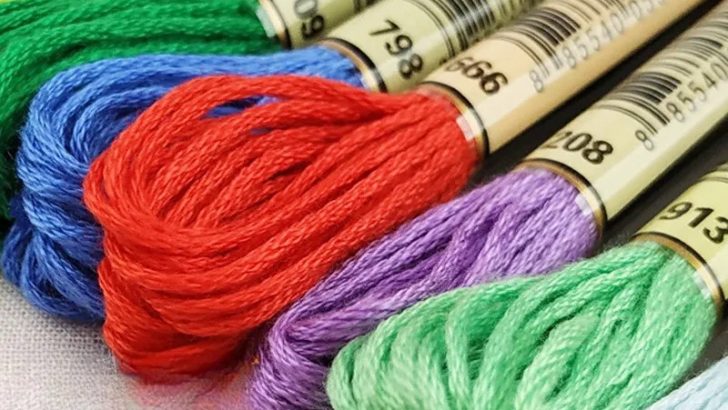Color Thread for Embroidery: Essential Picks for Stunning Stitches
Embroidery is an art form that has been cherished for centuries, offering a way to add intricate details and personal touches to fabric. One of the most critical elements in embroidery is the choice of thread color, which can make or break the final outcome of a project. Whether you’re a seasoned embroiderer or just starting out, selecting the right color thread is essential for achieving stunning stitches that reflect your creative vision.
The Importance of Color in Embroidery
Color plays a pivotal role in embroidery, influencing the overall aesthetic and emotional impact of a piece. The right hue can elevate a simple design into a masterpiece, while a mismatched shade might detract from its beauty. Understanding how different colors interact with each other and with the fabric is key to creating harmonious and visually appealing work. For instance, warm colors like reds and yellows can evoke energy and passion, while cool tones such as blues and greens often convey calmness and serenity.
Popular Threads for Embroidery Projects
When it comes to choosing threads, there are several types available, each with unique characteristics. Cotton embroidery floss is one of the most common choices, known for its softness and versatility. It comes in a wide range of colors and is ideal for both traditional and modern projects. Another popular option is polyester thread, which is more durable and resistant to fading, making it suitable for items that will be used frequently.
For those looking to add a touch of elegance, metallic threads offer a shimmering effect that can transform a simple design into something truly special. These threads are perfect for holiday decorations, wedding attire, and other occasions where a bit of sparkle is desired. Additionally, variegated threads, which have multiple colors within a single strand, can add depth and dimension to your work without the need for multiple colors.
Tips for Selecting the Right Colors
Choosing the right colors for your embroidery project involves more than just picking your favorite shades. It’s important to consider the fabric you’re working with, as certain colors may look different on various textures. For example, dark colors tend to show up better on light fabrics, while pastel shades can create a subtle contrast on darker backgrounds.
Another tip is to use a color wheel to help you create complementary or contrasting color schemes. This tool can guide you in selecting hues that work well together, ensuring a balanced and cohesive design. Additionally, don’t be afraid to experiment with color combinations—sometimes unexpected pairings can lead to stunning results.
How to Organize Your Thread Collection
Keeping your thread collection organized is crucial for efficiency and creativity. A well-organized system allows you to quickly find the right color when you need it, saving time and reducing frustration. One effective method is to categorize your threads by color family, such as reds, blues, and greens. You can also sort them by type, separating cotton, polyester, and metallic threads into different sections.
Using labeled containers or jars can also help keep your workspace tidy and make it easier to locate specific threads. Some embroiderers even create color charts or swatch books to reference when planning their projects. These tools can be especially useful when working on complex designs that require precise color matching.
Conclusion
Color thread is a fundamental aspect of embroidery, and selecting the right shades can greatly enhance the quality and impact of your work. By understanding the role of color, exploring different types of threads, and organizing your collection effectively, you can unlock new possibilities in your embroidery journey. Whether you’re working on a personal project or a professional piece, the right color choices will help you achieve stunning stitches that reflect your artistic style.
